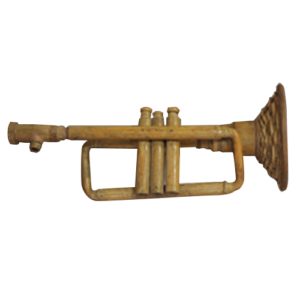Cyrtochloa hirsuta S Dransf. sp. nov.
Baitu (Tag.)
Cyrtochloa hirsuta S Dransf. sp. nov.
Culms firstly erect, becoming scandent with the tips long drooping, 6-7 m tall, green truing yellow on maturity, diameter 3-5cm, hollow, walls relatively thin, up to 4 mm thick or more internodes 50-70 cm long or more. Branches few to several at each node, with middle branch eventually becoming dominant. Culm sheath 10-15 cm long, persistent, covered with appressed pale brown hairs, base less prominent, rugose, ends overlapping; auricles erect, 15 mm long, 5 mm tall, fringed with easily shed bristles along the margins; ligules short, fringed with easily shed short bristles; blades erect, triangular, up to 13 cm long, 10 cm wide at the base, base cordate, with long tips and pointed, glabrous abaxially, pubescent adaxially with small auricles fringed with short hairs. Leaf-blades (10-25) – 32×2 – 5 cm, glabrous, serrate along the margins; auricles small, about 2 mm long, erect, fringed with bristles 5 mm long, easily shed; ligule entire or minutely lacinate; sheaths, margins hairy, petioles 5 mm long. Inflorescences borne on leafless axillary branches, or terminating leafy branches, or up to 60 cm long, lateral branches curved, about 9 cm long, each branch supported by a prominent sheath bearing a blade or a modified blade, and often furnished with small auricles; sheaths up to 1 cm long. Sensu Dransfield (1998b), ‘Pseudospikelets 9 mm long, sheaths or bracts hairy on the back towards the apex; spikelets slightly flattened; lower glume 4-5 mm long, acuminate with long tip, hairy on the back especially near the apex and along the margins, 9-nerved; lemma about 8-9 mm long, with a tip to 3 mm long acuminate, hairy on the back especially near the apex and along the margins, 9-nerved; lemma about 8-9 mm long, with a tip to 3 mm long, acuminate, hairy on the back especially near the apex and along the margins, 9 nerverd; palea 8 mm long, apex 2-lobed, hairy on the back near the apex, with 5 nerves the middle one branched halfway, and joining the side nerve next to it; extra structure 6 mm long, lanceolate, very thin, obtuse, 3-nerved; lodicules 1 mm long, fringed along the margins; ovary 9 mm long. Fruits subglobose, slightly rugose, 10 mm long, 7 mm in diameter.
As fences, preferred by local residents as barbecue sticks owing to its relatively uniform and thin culm wall, for general purposes, trellises of agricultural crops, other agricultural implements.
Similar to Cyrtochloa major, excepts for its thin culm wall, longer internodes and more rigid foliage leaves.
Science in a creative industry.
The DOST-FPRDI has a Bamboo Musical Instruments Innovation R&D program aimed at improving the quality of locally-made bamboo musical instruments (BMIs) through science and innovative technologies. The program seeks to standardize the production of selected BMIs, develop prototype designs, analyze raw material sources and existing markets, and build a BMI processing facility. In addition, the program aims to document the ethnocultural story behind several BMIs and identify the bamboo species used in BMI production to promote public awareness and appreciation of the cultural importance of these musical instruments. The program is a collaboration with the University of the Philippines and Philippine Normal University for teaching modules and analyzing sound quality and standardization of BMI design. The DOST Grants-in-Aid program provides funding.
PhBMI


